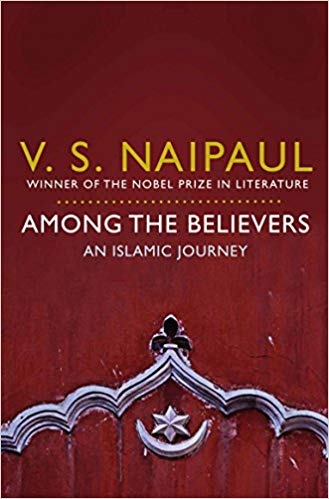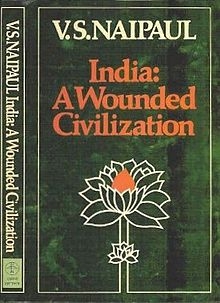Imaginen una fiesta del colegio de sus hijos, sobrinos o nietos y al intentar acceder les dicen “sólo dos adultos por niño; es la norma”. También pueden imaginar el acceso a una discoteca en el que le informan que “con zapatillas no puede; es la norma” o la sala de cine que reza “no puede acceder con comida del exterior”, pero usted sí puede acceder con la que compre en su establecimiento. Pónganse también en la tesitura de una persona de edad avanzada, ajena a las tecnologías, que necesita ingresar dinero en el banco y le dicen: “debe hacerlo por el cajero automático, son normas de la sucursal”. Normas, normas y más normas.
La normopatía es un modelo de conducta en el que la persona considera la norma como la garantía objetiva ante cualquier situación
Estos casos cotidianos sirven de ejemplo para tratar un asunto muy común hoy en día como es la normopatía. Un modelo de conducta caracterizado porque la persona considera la norma como la garantía objetiva ante cualquier situación o problema. Erich Fromm hablaba de la conformidad automática. Es decir, la persona deja de ser ella misma y adopta por completo las pautas culturales, transformándose en un ser exactamente igual a todo el mundo. Como los demás esperan que sea. También es compatible con la banalidad del mal descrita por Hannah Arendt: las personas acturarían dentro de las reglas del sistema al que pertenecen sin reflexionar sobre estas y sobre sus actos.
Aunque pueda parecer algo inusual o extraño, la normopatía se ha convertido en un soporte más de una supuesta objetividad. Hasta tal punto de que, como en los casos mencionados, no hay opción al diálogo porque imperan las normas, que en realidad convierten o, más bien disfrazan de autoridad a algunas personas.
La norma como criterio de salud
La psiquiatría actual define la salud mental en función de la adaptación a normas socialmente establecidas. Al definir así la salud, etiqueta a la persona perfectamente adaptada a las normas sociales como el modelo a seguir. El normópata como ideal.
Sin embargo, ¿cómo sabemos que normas son esas? ¿Quién tiene la potestad de dictarlas? ¿Cuáles son apropiadas y por qué? Según el sistema y sus diferentes estamentos (judicial, médico, político, etc.) las normas se conforman a través del consenso entre los profesionales de cada categoría.
Se considera sano sólo a aquél que cumple las normas
A su vez, esto conduce a dos preguntas que son, como poco, inquietantes: ¿Cómo se selecciona a esos profesionales? Y ¿qué validez tienen las normas basadas en el consenso de unos pocos, que no se basan en sólidos principios conceptuales y teóricos? Obviamente una validez limitada, pues la realidad que nos conforma es múltiple y variada y está constituida por factores biológicos, psicológicos y socioculturales. Pero ante esta dificultad, en lugar de confrontarlo, se rehuye el análisis, considerando sano sólo a aquél que cumple las normas. Asunto arreglado.

La norma como autocensura
Sí, es cierto que las normas funcionan para tranquilidad del gestor. Pero gestionar no consiste en poner normas sino en todo lo contrario: en lograr que prosperen espacios de progreso con la menor cantidad de normas. Las normas son estúpidas cuando, en lugar de favorecer la gestión de los espacios y de la gente, sirven para crear espacios de vacío, limitantes, excluyentes y discriminatorios. Todavía más cuando erigen una muralla entre los pensamientos de quien las cumple y el mundo social que lo rodea. Hay normas que anestesian, que atenúan la propia subjetividad, enajenando e incluso alienando a las personas que toman postura a favor de la norma de forma automática y acrítica.
Esta normopatía guarda una relación muy estrecha con las formas de difusión de los mensajes, los medios de comunicación, la propaganda, la cultura, etc. Las estadísticas, los sondeos, los mensajes que marcan el criterio de normalidad se han vuelto omnipresentes, forzando a quien se sale de la norma, a los indecisos, a alienarse con la mayoría.
Con la corrección política el poder huye del conflicto y busca someter al individuo a través de la norma impuesta
Así, cuando se usa el orden y la disciplina en lugar de incorporar los conflictos, el poder se coloca por encima de la sociedad. Con la corrección política, y con otras formas de expresión, el poder huye del conflicto y busca someter al individuo a través de la norma impuesta. Prolifera así lo igual.
Fenómenos como el miedo, la globalización y el terrorismo, tan presentes en la sociedad actual, son muestras del violento poder de lo igual. La hipercomunicación, el exceso de información, la sobreproducción y el hiperconsumismo son herramientas de las que se nutre el sistema para expulsar lo distinto, como bien explica Byung-Chul Han en su ensayo La expulsión de lo distinto.
Si una persona no hace uso de lo que llaman “lenguaje inclusivo”, es silenciada
Si una persona no cumple las normas, es expulsada. Si no hace uso de lo que llaman “lenguaje inclusivo”, silenciada. Si no piensa como la norma indica, negada su existencia. Si no condena ciertos actos, resulta criminalizado. Un niño travieso es considerado problemático porque no cumple la norma: es calificado como enfermo. Si una persona está triste y no cumple la norma social de producir y consumir: es considerando enfermo.
Se trata de normas dirigidas a silenciar la diferencia, hasta tal punto de hacer creer que no existe otra opción, otra forma de ver y actuar. Se incita a sentir pavor hacia lo distinto y se impide el diálogo con el fin de que las personas asuman las pautas, las creencias, ideologías y movimientos hegemónicos, como única forma de permanecer en la sociedad. El individuo renuncia a su propio criterio para conseguir la falsa aceptación de una mayoría que se ha erigido como autoridad y como poseedores de la verdad: busca el triunfo social y profesional mostrando cierta domesticación, limitándose a hacer lo que se espera de él.
El individuo renuncia a su propio criterio para conseguir la falsa aceptación de una mayoría que se ha erigido como poseedora de la verdad
Así los normópatas pierden todo sentido crítico de la realidad y tienden a considerar las normas de manera extrema. Pierden su subjetividad. Sus decisiones quedan fuertemente influidas por lo que la norma define como correcto. Y lo correcto es que haya normas iguales e inalterables en cualquier espacio, ya sea un colegio, la universidad, el Senado, un movimiento o un partido político. La normopatía se basa en lo igual. No se puede negar que es sencillo y fácil el procedimiento como tal: simplifica mucho las cosas.

Disentir antes que consensuar
Este modelo de conducta se presenta hoy supuestamente avalado por algunas ciencias y, por lo tanto, como irrefutable. Sin embargo, la normopatía contraviene una ley básica de la evolución: la diversidad. La selección natural escogió como estrategia y garantía de supervivencia la diversidad ante los cambios naturales y sociales. Si todos pensásemos y actuásemos igual nos extinguiríamos al no tener un repertorio de conductas diverso y heterogéneo con el que sobrevivir a los cambios naturales.
Es fundamental aprender a flexibilizar las normas en contextos distintos, inesperados, aplicando otros criterios que pueden ser igualmente válidos
Por ello es importante enseñar a nuestros hijos, a nuestros alumnos y a la sociedad en general que las normas son importantes en contextos muy concretos. Pero también es fundamental aprender a flexibilizar las normas en contextos distintos, inesperados, aplicando otros criterios que pueden ser igualmente válidos, con valor educativo, comunitario y social diferente al establecido, pero no por ello equivocados.
Las normas no son verdades absolutas. Son formalismos que pierden su eficacia cuando dejan de ser útiles. Si nos ponemos al servicio de la norma, el poder encontrará una vía adicional para adoctrinarnos y someternos a la corrección política. Cuanto más se desarrolle el criterio de la normopatía para definir lo correcto, más enfermos surgirán. Se trata de una ingeniería social que beneficia al sistema.
Si nos ponemos al servicio de la norma, el poder encontrará una vía adicional para adoctrinarnos y someternos a la corrección política
No hay duda de que la normopatía se ha convertido en una amenaza seria para la salud. La mejor receta para escapar de ella es desarrollar espacios de encuentro en los que disentir sea la norma. Sobre todo, espacios educativos en los que se enseñe el disenso antes que el consenso.





 del.icio.us
del.icio.us
 Digg
Digg
 Naipaul had a unique background. He was of Hindu Indian origins and grew up in the British Empire’s West Indian colony of Trinidad and Tobago. Naipaul wrote darkly of his region of birth, stating, “History is built around achievement and creation; and nothing was created in the West Indies.”
Naipaul had a unique background. He was of Hindu Indian origins and grew up in the British Empire’s West Indian colony of Trinidad and Tobago. Naipaul wrote darkly of his region of birth, stating, “History is built around achievement and creation; and nothing was created in the West Indies.” The arrival of Islam to the Sind is the disaster which keeps on giving.
The arrival of Islam to the Sind is the disaster which keeps on giving. 
